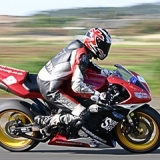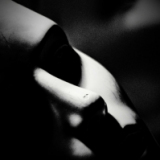- Forum
- General Discussion | Introductions | Off Topic Forum
- Photography General Discussion
- Too much background blur in portraits?
Too much background blur in portraits?
-
 Topic Author
Topic Author
- Tim Chiang
- Photography Hooked
-
- Canon 5D Mark II
- Followers: 121
- Posts: 548
-
Points:
3902
Post #674697
I didn't comment then, but more I think about this, isn't that the artistic side of photography? The purpose behind such lenses? I don't care for that Northrup guy, so not intentionally going on his side, but seem to be thinking as creators, we create based on the vision we have. As I see it, as long as the bulk of your face is in focus, game on right?
Where do you stand on this topic?
-

- Brachenland
- Lone Wolf
-
- Holga 120N
- Followers: 55
- Posts: 122
-
Points:
3882
Post #674698
-
 Topic Author
Topic Author
- Tim Chiang
- Photography Hooked
-
- Canon 5D Mark II
- Followers: 121
- Posts: 548
-
Points:
3902
Post #674699
BrokenCanon wrote: There's a difference between background blur and background bokeh. I'd prefer the back ground bokeh. But more are saying bokeh is overrated.
Interesting, never considered that. I always categorized them as the same.
-

- Nikon Shooter
- Oh Wise One
-
- 3S 3X 810 850
- Followers: 197
- Posts: 13795
-
Points:
88932
Post #674701
Tim Chiang wrote: Where do you stand on this topic?
Separation between subject and BG is most pleasing. I
don't buy into extreme anything and making a trend of
it… like if they had no other ways to explore their talents.
Light is free… capturing it is not!
-

- Piechura
- Newbie
- Followers: 7
-
Points:
5583
Post #674723
In a studio situation where you have full control over the background and lighting, you might shoot at a higher f-stop to get sharper results, but outside the ability to make the background completely melt away can be handy when you're in front of something that isn't particularly attractive.
Post #674749
It's not artistic just to blur a background. It may be effective depending on the scene/subject but that alone doesn't make something artistic.
Just blurring the background does not eliminate problem objects or areas. If there's a bright red car or sign back there, it will still be noticeable, just more as a red blob, but it's still there. To eliminate objects or part of a scene that are unappealing visually, or have nothing to do with the photo, it's necessary to move yourself and/or the subject, change the vantage point, to get a different background.
Sharon
-

- Brachenland
- Lone Wolf
-
- Holga 120N
- Followers: 55
- Posts: 122
-
Points:
3882
Post #674755
-
 Topic Author
Topic Author
- Tim Chiang
- Photography Hooked
-
- Canon 5D Mark II
- Followers: 121
- Posts: 548
-
Points:
3902
Post #674763
BrokenCanon wrote: Some great answers here, but wanted to follow up with one more observation. It's not just the blur of bokeh, but the lens used to create this effect. Some lenses are more desirable with the bokeh than others. While other lenses tend to blur/distort the back ground. So I guess your question would depend on how much research you've done on a particular lens when wanting to use it for these effects. Also, one other thing, all devices have processors and these processors work at different speed very similar to your computer's processor speed. So if the processor is slow, the blur or the amount of image processing at a slower rate, the back ground and even foreground is going to have some distortion which could be viewed as blur instead of bokeh. Add this with an inferior lens, the image quality will suffer.
True, generally the higher priced lenses will have more aperture blades giving smoother bokeh.
- Forum
- General Discussion | Introductions | Off Topic Forum
- Photography General Discussion
- Too much background blur in portraits?
Latest Reviews
The Canon EOS R100 is an entry-level mirrorless camera introduced in 2023. But just because it’s an entry-level camera doesn’t mean it’s a bare-bones camera. Find out why in this review!
Nikon’s retro-looking Nikon Zfc is anything but retro. Under its classic body is a host of features and amenities that make it a worthwhile compact mirrorless camera for 2024.
The Canon EOS R50 is one of the newest R-system cameras from Canon. Is it worth your money? Find out all the details you need to know in this comprehensive review.
The Sony FE 70-200mm f/2.8 GM OSS II is Sony’s flagship mirrorless zoom lens. As such, it’s loaded with features and has a top-shelf build quality that makes it a top pick!
Forum Top Posters
-
1Scotty 5 posts
-
2Foggy 4 posts
-
3TCav 4 posts
-
4No Show 3 posts
-
5CaptNemo 2 posts
-
6Roger Lang 2 posts
-
7Otto F 2 posts
-
8Fitch 2 posts
-
9Kenta 2 posts
-
10Pork Express 2 posts
Latest Articles
The Insta360 has one of the best lineups of action cams and 360-degree cameras. With these Insta360 accessories, you can elevate your photography and videography game!
Creating impactful photos of landscapes depends on many factors, not the least of which is your talent behind the lens. This guide explores other elements required for the best product.
The Canon EOS R100 is an entry-level mirrorless camera introduced in 2023. But just because it’s an entry-level camera doesn’t mean it’s a bare-bones camera. Find out why in this review!
Are you ready to upgrade your camera? Before buying new, you might consider the value of purchasing used gear to save money.
The Olympus OM-D E-M10 Mark IV is a micro four thirds camera released in 2020. It’s an entry-level system along with the OM-D E-M5 Mark III. Use this guide to determine which one is best for you!
Blue hour photography might not be as well known as golden hour photography, but it is every bit as good a time to create epic images of landscapes. Learn how in this quick tutorial!
Nikon’s retro-looking Nikon Zfc is anything but retro. Under its classic body is a host of features and amenities that make it a worthwhile compact mirrorless camera for 2024.
Moving from taking snapshots of your dog to creating beautiful images doesn’t have to be that difficult! Use the tips outlined in this dog photography guide, and you’ll get better results in no time.















